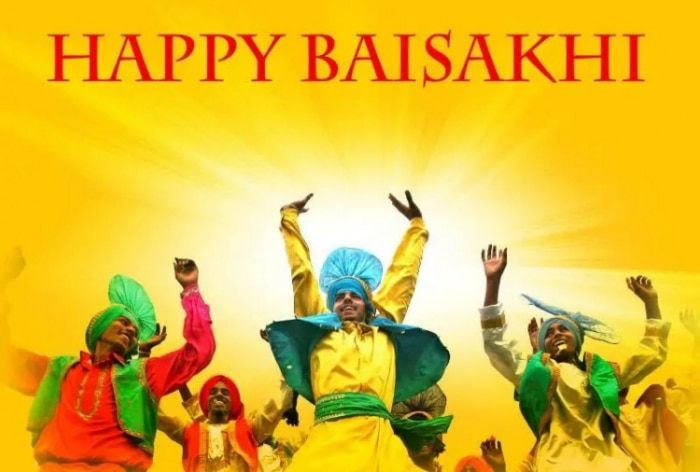Baisakhi is a festival that brings people together, celebrates the abundance of nature, and marks the beginning of a new season of growth and prosperity.

Baisakhi 2023: Baisakhi is an important festival celebrated in North India, particularly in the state of Punjab. The word “Baisakhi” is derived from the Sanskrit word ‘Vaisakha”, which refers to the month of April-May in the Hindu calendar. It is celebrated on the 13th or 14th of April every year and marks the beginning of the harvest season in India. This date is determined by the Nanakshahi calendar, which is a solar-based calendar used by Sikhs to determine the dates of their religious festivals. This year, 2023, Baisakhi will be celebrated on 14th April.
The spiritual significance of Baisakhi is to thank the Almighty and the five Elements of Nature for blessing the country with a good harvesting season. Many Hindus in the north region offer gratitude and dip in sacred rivers such as Ganga, Jhelum and Kaveri.
Overall, Baisakhi is a festival that brings people together, celebrates the abundance of nature, and marks the beginning of a new season of growth and prosperity. It is a festival that has both religious and cultural significance, and there are several rituals and traditions associated with it. People dress up in colourful clothes, dance to traditional Punjabi music, and indulge in feasting delicious food, especially Punjabi delicacies like sarson ka saag and makki ki roti.
Here are some of the common rituals and practices observed during Baisakhi:
- Visiting Gurudwaras: Sikhs visit Gurudwaras to offer prayers and seek blessings from the Almighty. Special kirtans are sung, and langars are organized to feed the devotees.
- Nagar Kirtan: Nagar Kirtan is a procession in which devotees sing hymns and carry the Guru Granth Sahib on a decorated float. The procession is led by the Panj Pyaras (five beloved ones), who represent the original five Sikhs initiated by Guru Gobind Singh.
- Amrit Sanchar: Amrit Sanchar is a special ceremony in which Sikhs are initiated into the Khalsa Panth by taking Amrit (sweetened water) from the hands of the Panj Pyaras. This ceremony is usually held in Gurudwaras and is considered one of the most important rituals of Baisakhi.
- Bhangra and Gidda: Bhangra and Gidda are traditional Punjabi folk dances that are performed during Baisakhi. Men and women, respectively, perform these dances to the beats of dhol and other musical instruments.
- Fairs and Festivities: Baisakhi is also a time for fairs and festivities. People decorate their houses with lights and flowers, wear new clothes, and enjoy traditional Punjabi delicacies. Many people also participate in sports and games, such as kabaddi and wrestling, that are organized during this time.
Though Baisakhi gained popularity as a Sikh festival, it is celebrated in various regions in India. The celebrations and customs may vary from region to region and from community to community-
- In West Bengal, the festival is known as “Poila Boishakh” and is celebrated as the Bengali New Year. It is celebrated on the 14th or 15th of April, depending on the Bengali calendar.
- In Assam, the festival is known as “Bohag Bihu” or “Rongali Bihu” and is celebrated to mark the beginning of the Assamese New Year. It is celebrated in mid-April and is a three-day festival.
- In Kerala, the festival is known as “Vishu” and is celebrated as the Malayalam New Year. It falls on the 14th or 15th of April and is celebrated with great enthusiasm by the people of Kerala.
- In Jammu region, Baisakhi is an important festival among Dogra Hindus. They celebrate by going to temples, and community fairs are held with folk dance and music.
Overall, Baisakhi or its equivalent festivals are celebrated in different parts of India but they all signify the beginning of a new year or a new season of growth and prosperity, truly the festival of food, gratitude and abundance.
(Inputs: YogiG, Author and Founder, Grihastha Yogi Foundation)
Stay connected with us on social media platform for instant update click here to join our Twitter, & Facebook
We are now on Telegram. Click here to join our channel (@TechiUpdate) and stay updated with the latest Technology headlines.
For all the latest Festivals and Events News Click Here
